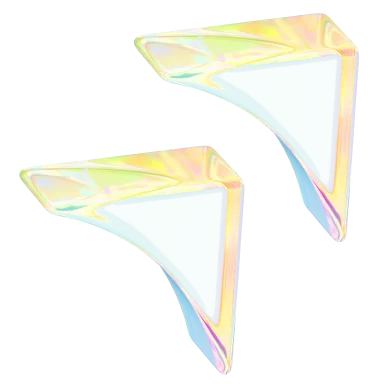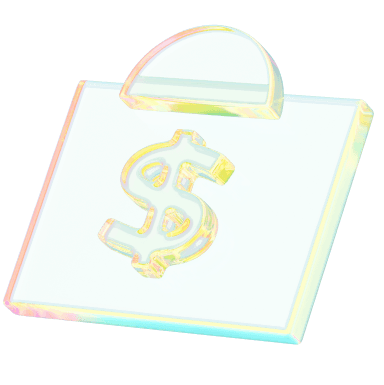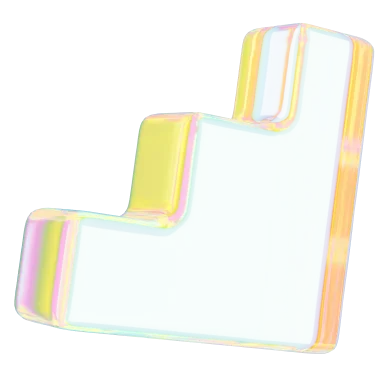How to Create & Sell NFT Art: A Step-By-Step Guide 🎨
- Design & Creative

Learn everything you need to create NFT art, like what it is and key steps for creating and selling it. Get ready to unleash your inner artistic genius.
The art world is changing, and there's a buzzword on everyone's lips: digital NFT artwork. It's where tech meets creativity like never before.
Thinking of diving in? Whether you're a newbie artist or have sold art before, this guide's for you. We'll break down what NFTs are, their pros and cons, and how to create NFTs for your art.
When it comes to making art in the digital age, here’s what you need to know.

What are NFTs, and how do they work? 🤔
NFT stands for non-fungible token, a digital asset that represents ownership of content — anything from music to art and virtual real estate to collectibles.
Non-fungible means the content is one-of-a-kind and can't be exchanged on a one-to-one basis because it's unique. You can exchange a $100 bill for another $100 bill in most cases, but not if Michelle Obama drew a smiley face on it — now it's irreplaceable. The same is true of NFTs for artwork — these tokens tell the buyer the piece is unique.
Originally, NFTs represented digital content ownership, but that definition has since expanded. Now, you can trade, buy, and sell NFTs for real-world assets, like physical trading cards, clothing, and real estate.
The pros and cons of creating NFT-based art ⚖️
Before becoming an NFT artwork creator, consider the following advantages and disadvantages of selling your art this way.
Pros 👍
- Creating NFTs is easy, and you don't need to be a digital designer to make digital artwork you can sell this way. You can use AI to create the art or even draw something simple on paper and use something like Photoshop to make it digital.
- You can earn royalties from secondary sales, a great way to earn passive income.
- Selling NFT-based art can be cheap, with marketplaces like OpenSea allowing you to create and sell art without a significant upfront cost. However, larger marketplaces might be more inaccessible if you’re less established.
Cons 👎
- It can be time-consuming since you must create the art, market it, and interact with buyers.
- The volatile market could lead to your work not selling. Prices can also be volatile, so if you price your work too high, you might not attract buyers. And budget-friendly pricing might make your art so popular that it loses value.
- The market is slowly becoming saturated as NFT-based art becomes more popular, making it harder for creators to stand out.
How to make NFTs for your art: 6 steps 🧑🎨
Ready to sell your artwork in an advanced and unique way? Here’s a six-step guide to making NFTs for your art.
1. Choose a content type 🎨
NFT-based artwork can be anything, from memes to music to paintings. But you’ll want to choose a content type right away since it dictates the tools required to make the artwork. You need editing software like Photoshop and a pen tablet for graphic art. And if you’re providing the buyer with a physical copy of the NFT, you need to decide whether you’ll print it yourself or have someone else do it.
2. Choose a format 🖼️
Most NFT marketplaces have format restrictions, like limiting NFTs to 100MB, for example. If your work is complex and detailed, JPEG is better than PNG since it's designed for compression. PNG is better if you want to maintain NFT image quality since it uses a lossless compression algorithm, and MP4 has smaller file sizes than AVI, making it better for video content.
3. Choose a blockchain ⛓️
Blockchains, which are ledgers for various cryptocurrencies, are where the record of your NFT is stored and where you’ll host your collections. Each blockchain has different transaction speeds and gas fees (how much it costs for someone to mint or buy your NFT).
Here are a few common blockchain choices:
- Ethereum ($ETH) has a large collection of NFTs, but the fees for selling and minting are high.
- Solana ($SOL) offers a $0.00025 per transaction fee, with the fastest transaction speed.
- Polygon ($MATIC) offers a less than $.01 per transaction fee, with fast transaction speeds.
- Tezos ($XTZ) boasts high transaction speeds with low transaction fees (only a fraction of an XTZ token).
4. Find the right marketplace 🛍️
Some marketplaces like OpenSea and Foundation cater to emerging artists who are still learning, and platforms like Beeple and Celebrity NFT Marketplace host items from celebrities or professional artists. When choosing a marketplace, also consider the blockchain it supports. For instance, Objkt only supports Tezos, and SuperRate only supports Ethereum.
5. Open a crypto wallet and deposit currency 🤑
You’ll need a crypto coinbase wallet like MetaMask to pay for the gas fees to get your work in marketplaces. Many crypto wallets are free to download and install, but you must perform a bank transfer to buy the currency for your chosen NFT platform. Remember that the fees you pay are determined by the network traffic involved and the size of the transaction.
6. Create an account and link your wallet 👛
You’re almost ready to upload your art — you just need to create a marketplace account following their instructions. Then, link your crypto wallet to mint your NFTs (uploading the file to the marketplace, where it’s recorded on the blockchain). Now, you can set the price for your art or sell it through an auction.
How to sell your NFT artwork: 3 steps
It’s time to reap the rewards of your hard work — here’s a straightforward three-step guide that outlines how to sell NFTs.
1. Promote your NFTs 📣
To maximize the chance of someone purchasing your NFTs, take them to social media and build excitement for their reveal. Join online communities to discuss NFTs, find out what people add to their NFT collection, and increase brand awareness on socials.
2. Create listings 📜
Creating a listing means getting your NFT ready to be sold on an NFT platform like OpenSea after it’s been uploaded and minted. Your listing should contain the following information about your artwork:
- The title
- What it is
- Availability
- Rarity tier
3. Accept an offer 🫲
After you’ve listed your NFT, you’ll get notifications from the platform whenever a buyer accepts an offer (if you set a fixed price) or if there’s a new bid (if you chose to auction).
Here are three ways you might accept an offer:
- Public sale: You accept the payment from the person who wants to buy your NFT through the marketplace.
- Public bid: You accept the highest bid for your NFT through the platform you advertised it on.
- Private transfer: The person wanting to buy your NFT sends a cryptocurrency payment directly to your crypto wallet.
Join fellow artists on Contra 👯
Ready to get paid for your services as an NFT artist? Join Contra, an Independent-forward community filled with creatives that can answer any NFT-related questions you have. And if you’re looking for the right NFT artist to complete project work, we’ll match you with the best freelancers in the biz.

How to Price Your Work: Graphic Designers’ Hourly Rates ⏱












